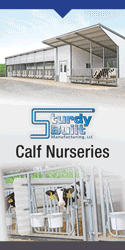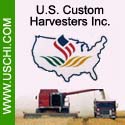 |
 |

|
|
|
Minnesota Ag News Headlines |
 |
U of M Drawing Renewable Resources from Organic Waste
Minnesota Ag Connection - 01/21/2021
What happened to those watermelon rinds you tossed into the garbage or compost heap last summer? Most likely, bacteria digested them, releasing most of their carbon as carbon dioxide. But what if digestion turned some of that carbon into methane? In that case the methane, having come from organic material, would qualify as renewable natural gas.
A team headed by U of M faculty in the College of Food, Agricultural and Natural Resource Sciences and College of Science and Engineering (CSE) has a project at Second Harvest, a local food bank, to use bacteria to digest rinds and other spoiled or otherwise unusable food. The key is to make bacteria metabolize the food waste in oxygen-free chambers known as anaerobic digesters. In the digesters, anaerobic bacteria--which thrive in the absence of oxygen--can produce "biogas," a mixture containing significant amounts of methane as well as carbon dioxide.
As a bonus, the bacteria leave behind nutrients like phosphorus, nitrogen and potassium, which can be sold to farmers as fertilizer. At Second Harvest--the nation's second-largest food bank--this will reduce the approximately $200,000 it must spend every year to have unusable food hauled away, thus allowing the purchase of more food for needy families. Second Harvest has installed a pilot digester at one of its facilities to test its performance with the stream of food waste it produces.
Similar systems are expected to convert organic matter from manure and sewage into biogas.
Read more about this project on the CSE website, the Office of the Vice President for Research's Inquiry blog, or the BioTechnology Institute's Gateway blog.
Other Minnesota Headlines
|
|
 |


|
 |
|
Copyright © 2024 - Farms.com. All Rights Reserved. |
 |
|